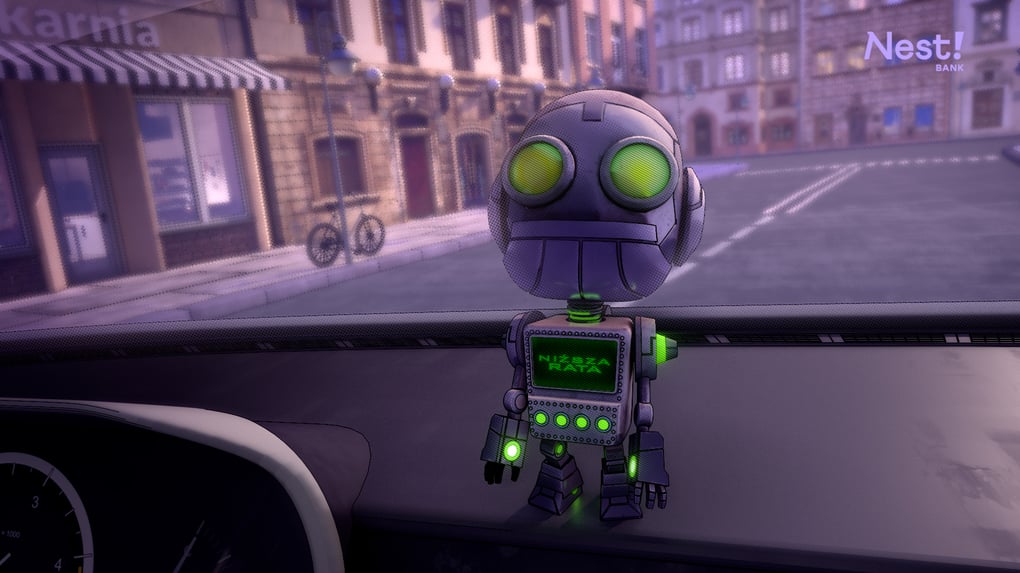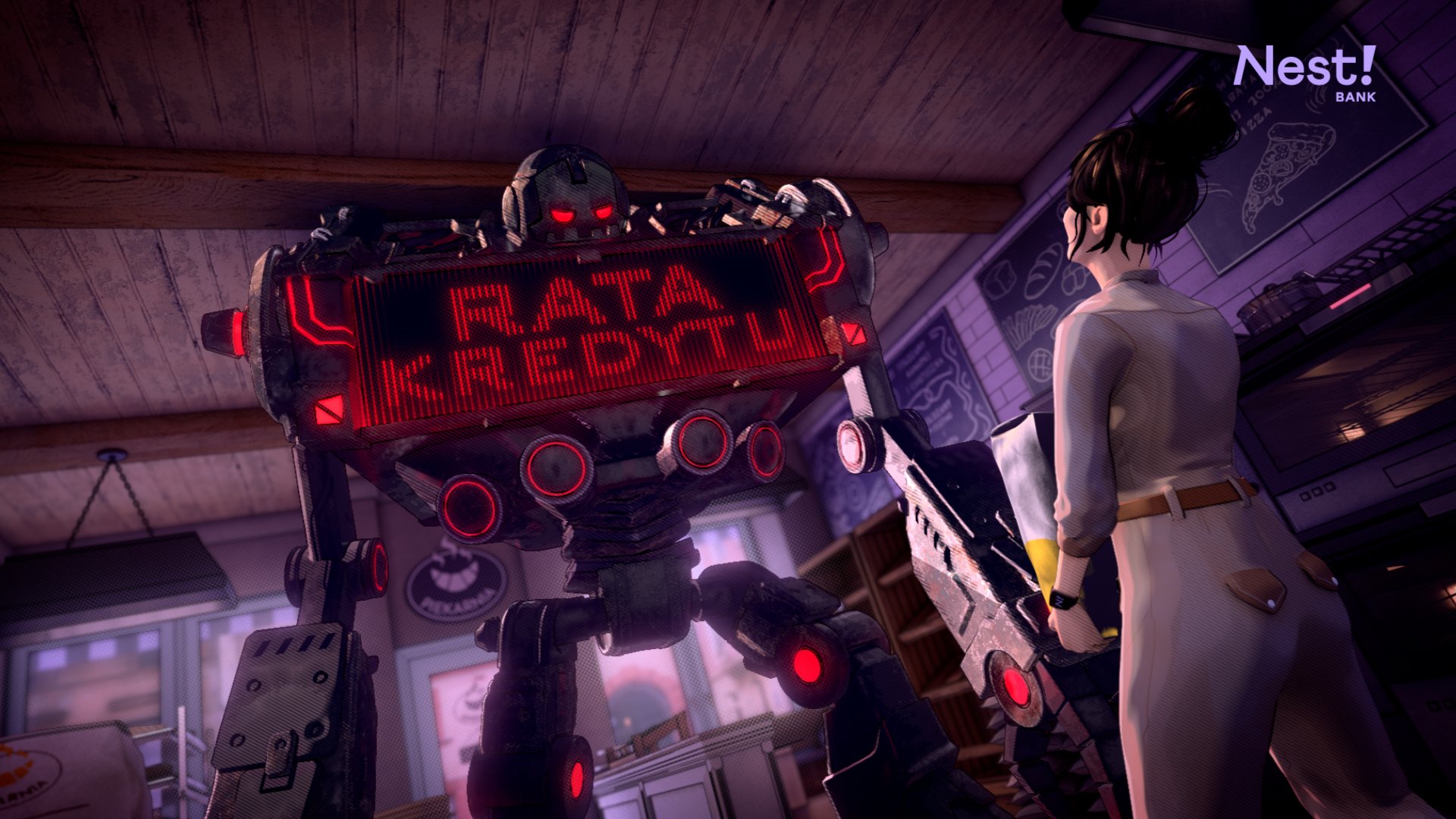
Client:Nest Bank
Region:Europe
Industry:Banking and Financial Services
Nest Bank creates a home for automation in the cloud

250
automations
400,000
saved hours of manual work
5
licenses
Client Overview
Founded in 2016, Nest Bank offers mobile banking services tailored for entrepreneurs in Poland. It aims to keep things simple and informal, with services like free mobile business accounts and online loans available with just one click of a button. It’s owned by the private equity fund, AnaCap.
Small businesses and entrepreneurs are the cornerstone of the Polish economy, accounting for 99.8% of enterprises. The vast majority have fewer than 10 employees. This presents a challenge for banks. Should they treat them like consumers, offering retail banking, or large organizations, supplying business services?
Historically, they’ve tended to fall through the gap. Neither big enough to justify corporate banking nor small enough to get a personal account. Until Nest Bank came on the scene in 2016. It’s been instrumental in helping this underserved market.
But doing so has presented challenges. Karolina Mitraszewska is Vice President and Chief Operating Officer at Nest. She says, “You need to automate to avoid spiraling costs and manual mistakes.”
Nest wisely chose to automate. Przemysław Buraczyński is Director of Change Management and Transformation at Nest. He says, “We’ve used robots to scale fast. Instead of creating a workforce of administrators, we’ve invested in the future, creating leaner operations based on robots. On average, they can do the equivalent work of one hundred full-time employees. This means we can meet the growing needs of our clients, offering business-level service with retail banking volume.”
A promising start
The bank began exploring automation in 2017 after one of its suppliers suggested how the software might help it achieve the growth it aimed for. It embarked on a proof of concept program to explore the benefits.
We identified a simple manual process—closing inactive accounts. It’s a labor-intensive task that we didn’t want employees wasting time on. The team named its inaugural robot Henio, a Polish name with a homely feel that translates as Henry in English. Henio could do the work four times faster than a person.
Przemysław Buraczyński • Director of Change Management and Transformation
“Having seen how automation helped, we knew it was something we should expand,” adds Mitraszewska. At this point, the team created a center of excellence (CoE) to help guide a speedy and effective use of the technology across the business.
“We started with simple tasks,” Mitraszewska notes. “We looked for repetitive back-office processes so we could learn how to use the software.” The team set the next automation to work, dealing with backlogs in its document archiving system. “They moved files incredibly fast. We also created automations to help with debt collection.”
Robots were particularly suited to these tasks, able to undertake constant, repetitive work at speed and without error. Put a person in the same role and they'd soon suffer from fatigue and become blind to potential mistakes. Additionally, an automation doesn’t need breaks, allowing it to work in the background all hours of the day and night—even over weekends.
Pandemic acceleration
When the pandemic hit, Nest was in the enviable position of having robots ready to step in where employees couldn’t owing to restrictions. Pressure mounted to handle new processes such as administering loans from the Polish Development Fund.
“We needed fast and reliable automations to handle the COVID-19 regulations,” Mitraszewska recalls. “First, we set up a process that allowed customers to apply. Within hours, a robot was managing the main element, with employees supporting. Clients received a fast, reliable and simple service that enabled them to get funding within a tight deadline.”
Once the initial sprint was over, Nest began adding more robots, reducing the reliance on members of staff, building a fully automated service. From the very outset, automation had been integral to the system. As a result, the business saved about 15,000 hours of work, handling zł185,982,635 (about €42,000,000) for over 5,000 customers.

“Automation was built in from the start. Even when designing new solutions to handle COVID-19 regulations, we assumed the technology would be central. We had little choice, but we had also developed an ‘automation first’ mindset.”
The only point at which a human needed to intervene was when there was an exception. At this point a member of the team would take over to handle a more complex case, something people are better placed to do.
Automation becomes business as usual
Having accelerated using automation during the pandemic, Nest was ready for the future. As the world settled into a new reality, the bank expanded its use of robots across its operations, focusing on scalability of its business.
As this expansion happened, the bank became increasingly confident in how it had developed and implemented the software. “The solutions we’re currently working on are becoming increasingly complex. We don’t like to be limited by anything, so we decided to implement UiPath in the cloud,” enthuses Mitraszewska. This allows total flexibility, supporting fast innovation and the ability to create robots at a pace.
But this doesn’t mean Nest’s being wasteful. “Having had a CoE from the start, we’ve built best practices and guidelines that we follow strictly,” Mitraszewska says. “For example, wherever possible, we reuse components. In fact, instead of creating fully formed robots, we now build blocks that can be easily assembled.” While this can take longer in the short term, it’s an approach that pays off.
This level of dedication has allowed the bank to do many of the implementations itself, without the need for external help. “In 2022, we allocated funding for support and training from consultancies. Yet, we managed to do everything in-house, including the creation of our framework on which we implement our automations in the UiPath Platform.”
Never lose the human touch
When asked how an organization such as Nest, with 800 employees, has ensured the smooth introduction of automation, Mitraszewska is quick to say, “No robot can replace human creativity. And no robot is 100 percent effective—there will always be a surprising case that must be overseen by a human.”
To ensure people welcome them, the bank has put staff in the driving seat.
It’s the employees who submit robotization initiatives to the CoE. They’re the ones who take control, rather than a robot being forced upon them. And after the decision to implement, the CoE delivers quickly.
Karolina Mitraszewska • Vice President and Chief Operating Officer
As an extension of this employee-first approach, the bank is also working on a pilot citizen developer program. This will allow people to build their own smaller robots using low- and no-code tools, which can help them on a day-to-day basis. “Our plan is to reach areas not covered by the CoE,” Mitraszewska explains.
“Overall, automation enhances our work and makes it more effective. Now, we can serve our customers faster and more efficiently. In doing so, we can grow the business and offer higher value roles to people,” Mitraszewska adds with conviction.
Robotic results
While the CoE named the first robot, the team soon gave up and decided to number them, simply because there were so many. “We’re currently working on robot number 250,” Mitraszewska laughs. “There aren’t enough names to go round.”
Overall, this has saved the bank over 400,000 hours since 2017. “The amount of time saved is the way in which we measure impact,” Mitraszewska continues. “But it’s not the only metric. We also reduce the amount spent on other software solutions.” A supplier once quoted the bank zł600,000 (about €135,000) for a solution. “We used robots, and it was 100 times cheaper.”
Nest’s automation roadmap
Nest’s development plan emphasizes the cloud and AI. “We’re exploring the possibilities of incorporating AI into our robots. We believe it is a great opportunity and are eagerly awaiting developments from UiPath,” Mitraszewska appeals.
She’s also keen to let others know that the technology is a game-changer that has few drawbacks. “We believe you can’t go wrong. The notion of high costs and difficulty of implementation are myths that need to be debunked.”
Mitraszewska has some excellent advice for others considering automation.
Start small. Use the trial version of UiPath to create a basic robot that doesn’t require specialist IT knowledge. Also, draw on the resources available in the UiPath Academy. Doing so will easily show whether automation will bring benefits to your company.
Karolina Mitraszewska • Vice President and Chief Operating Officer
“When you’ve mastered automation, use it to free staff from repetitive tasks. Invest in the technology so employees can do what they’re best at. For us, this means being creative and finding ways to improve customer experience.”
Buraczyński chips in, “When you start, it can be hard to make a business case for automation. You need a proof of concept to illustrate the return. As soon as you have this, it creates a snowball effect, allowing fast growth.”

“Suddenly you start seeing uses everywhere. Not just to save time, but to get products to market quickly, boost compliance, or even using robots to design the processes they’ll be working on.”
Finally, Mitraszewska is keen to underline the importance of using the cloud for automation.
It’s so much quicker and flexible. We’re the first bank in Europe to make use of UiPath in the cloud. Every new automation is cloud-first. The speed at which we can deploy is astonishing.
Karolina Mitraszewska • Vice President and Chief Operating Officer
And speed is something Nest values. In just a few years, it’s built a program that many organizations of its size could only dream of. It’s created a home for automation in the cloud, helping it step up and serve Polish entrepreneurs, accelerating profitable growth, and putting it on a path to success.
Ready for your own case study?
Speak to our team of knowledgeable experts and learn how you can benefit from agentic automation.
